Generally speaking, the overall aesthetic of dive watches is one which doesn’t tend to appeal to me to the point of wanting to own one. I’m not entirely sure why, but I suspect it might be something to do with the bolder, purpose-designed bezels with larger numbers or markers found on dive watches, where I prefer a more pared back look.
There are a few exceptions, of course, there always are. And don’t get me wrong, I appreciate a dive watch as an important and useful tool. A favourite hobby of mine (which I don’t get to enjoy anywhere near as much as I wish I could) is snorkelling.
I don’t think it’s over-stating it to say that my first visit to the Great Barrier Reef genuinely changed my life – it opened my eyes to the underwater world, and ever since then some of my fondest memories have been from getting into the water and sharing the space with turtles and penguins, sharks and stingrays, and even playing with seals.

Snorkelling on the Great Barrier Reef
I have always found it incredibly easy to lose track of time underwater, it certainly would have been useful to have a dive watch on my wrist during these experiences! However, these days, it is not something I get to do very often and so it is difficult to justify the expense for something I would rarely wear (maybe if we ever move to Australia…!)
Of course, as a watch enthusiast, I cannot help but explore what options there are, so if and when the time I want to buy a dive watch comes along, I know what I want. And for me, there has always been on stand-out dive watch – the Tudor Pelagos.
Is the Pelagos the best value dive watch?
Why would I choose a Tudor Pelagos? Well, Tudor has history in the world of dive watches, starting with the Oyster Prince Submariner in 1954, a year after the Rolex Submariner, and various references of Tudor Submariner were available until the final 79000 series (references 79090 and 79190) in the 1980s and 1990s.
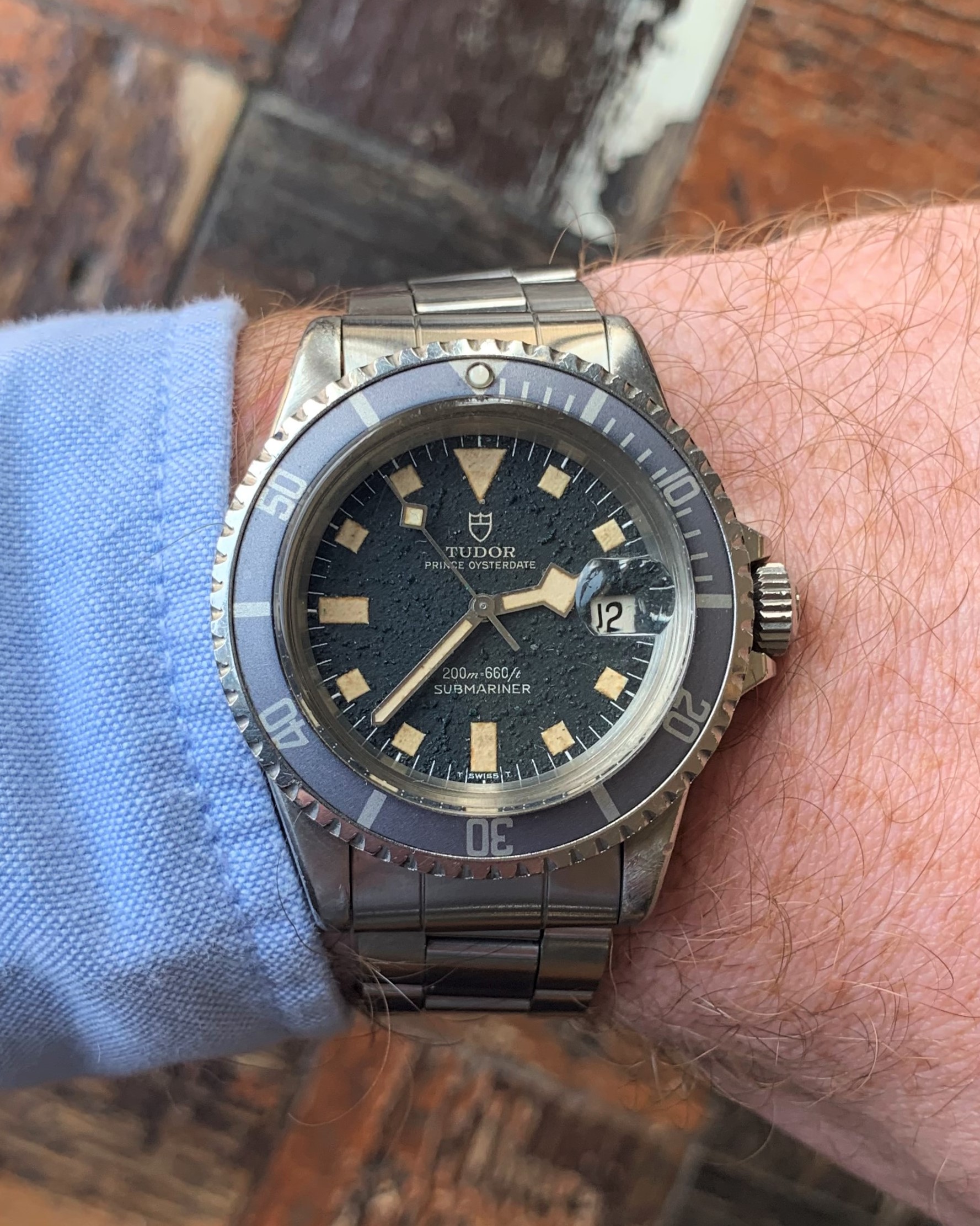
Vintage Tudor Submariner 9411-0 from 1976
Whilst the Tudor Submariner is no longer available, Tudor now offers both the Pelagos dive watch, and the incredibly popular Black Bay watches.
Since the Pelagos was released in 2012, in my opinion it is simply one of the best spec’d dive watches out there, as well as being priced less than its comparable competition, with a list price of £3650.
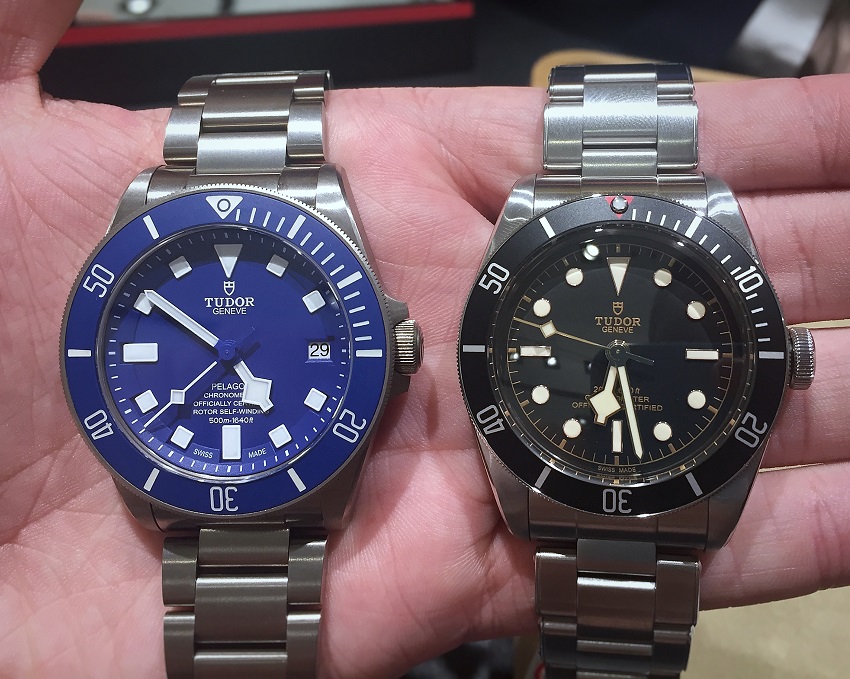
The original Tudor Pelagos (L) and Tudor Black Bay 58 (R)
Let me illustrate this point quickly, looking at a couple of other popular dive watches that are also presented on a bracelet with the time and date on the dial – a Rolex Submariner date priced at £8050 (more than double the Pelagos), and an Omega Seamaster 300 priced at £4840 (almost £1200 more than the Pelagos).
The Pelagos is rated to a depth 500m, where both the Submariner and Seamaster are rated to 300m. The Pelagos is cased in titanium with a titanium bracelet (and comes with a free strap), which is more lightweight than the steel Submariner and Seamaster, neither of which come with a free strap option! Both the Pelagos and Submariner bracelets incorporate a micro-adjustable clasp, where the Seamaster does not. The Pelagos and the Seamaster both incorporate a helium escape valve, where the Submariner does not.
Each watch features a ceramic, uni-directional bezel and screw-down crown. Each watch is also equipped with at least an automatic chronometer (COSC-rated) movement, where the Submariner is a Rolex-certified ‘Superlative Chronometer’ and the Seamaster is a ‘Master Chronometer’; the Pelagos and Submariner offer 70 hours power reserve to the Seamaster’s 55 hours. And each watch comes with a 5-year manufacturer guarantee.
I’ll stop there, and yes, I know there are many other great dive watches out there that you could run a similar comparison with – I have just tried to pick those most likely to be “go-to” dive watches – but my point is that you will be hard pushed to find something that offers the same spec as the Pelagos for the same price or less.
So, given the Pelagos is already very well spec’d, following the announcement of the Tudor Pelagos FXD, I was particularly curious to see what the differences would be, especially given this watch was born of a revived collaboration with the French Navy – Marine Nationale. After all, as a tool watch, the Pelagos is quite formidable, so what would the combat divers of the Marine Nationale want to change? And why?
Tudor Pelagos FXD
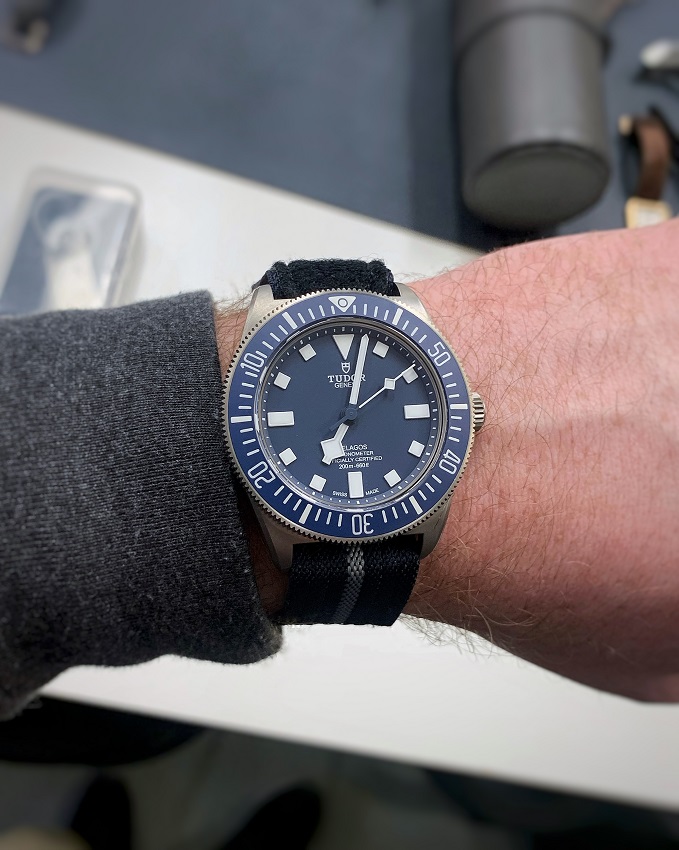
Tudor Pelagos FXD M25707B/22-0001
At first glance, you would be forgiven for thinking that not a great deal has changed. But then again, given the original Pelagos was so adept as a functional dive watch, is it that surprising? The Pelagos FXD is really more of a refinement of something that already does a job well, fine-tuned to the exacting requirements of the Marine Nationale combat divers.
The Pelagos FXD is the same size as its predecessor, with a 42mm brushed titanium case, although it has been made thinner – where the original Pelagos was 14.3mm thick, the Pelagos FXD is 12.75mm thick. To achieve this, the water resistance rating has reduced from 500m to 200m, which is more than enough to meet the requirements of the combat divers, as well as forgoing the helium escape valve (which doesn’t offer much value anyway unless you’re a saturation diver, staying underwater for weeks at a time, which of course a combat diver is not!)
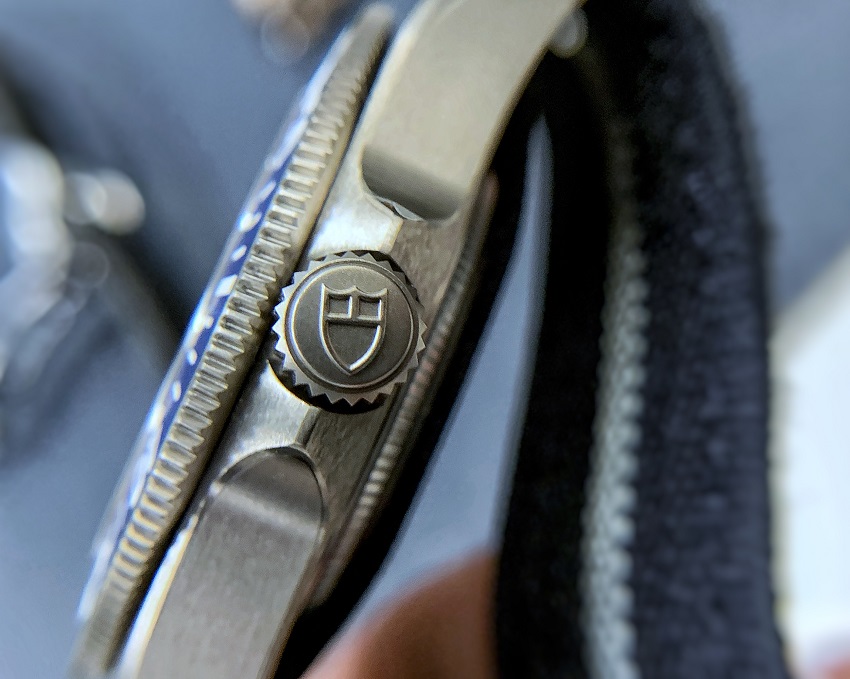
Tudor Pelagos FXD titanium case and crown
Not a great deal has changed on the dial, although the colour of blue is very subtly darker than the original Pelagos’ blue colour, and there is one less line of text which declutters it a little. The most notable difference is the removal of the date window at 3 o’clock which has been replaced by a regular hour marker. It stands to reason that knowing the date is probably somewhat superfluous in the midst of an underwater military operation!
You may have also noticed that the bezel has changed. There are defined minute-markers around the whole bezel, as opposed to just 0 to 15 minutes, although interestingly the countdown from 15 to 0 is the only section of the bezel with a marker for every minute. Between the 20 and the would-be 15, there are only 3 additional markers, whereas between the would-be 15 and the 10, there are 4.
The numbers on the bezel are also in reverse. This is known as a countdown bezel and can be found on other dive watches, but also pilots watches, too.
Countdown bezels are used to count ‘down’ to an event, rather than count ‘up’ to it as you might with a chronograph. For example, if you wanted to time something for 10 minutes, you would rotate the bezel until the ‘10’ aligns with the minute hand. When the minute hand points to the triangle 10 minutes later, you know that 10 minutes has elapsed.
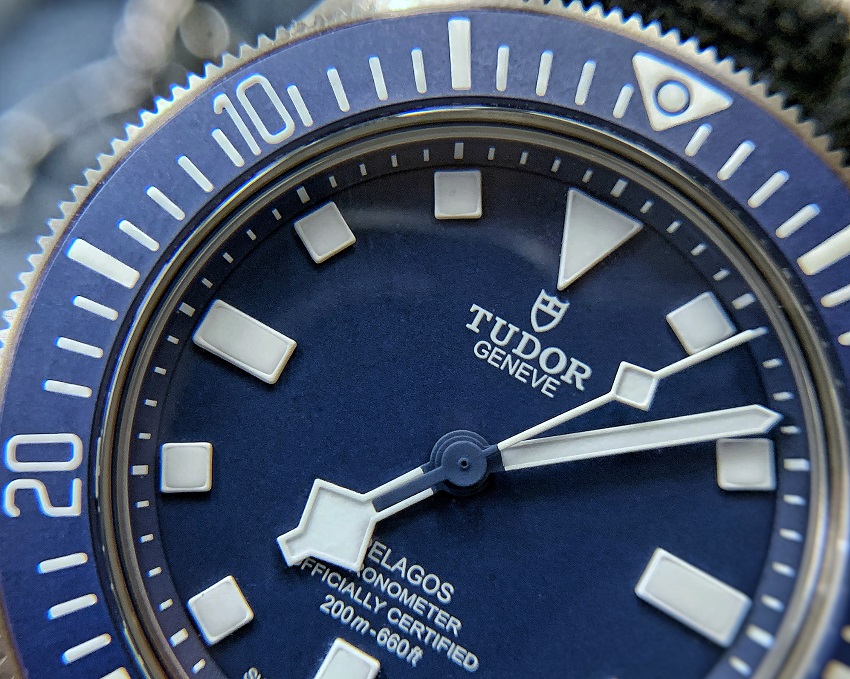
The dial and bezel of the Pelagos FXD
This configuration of bezel is preferable for the Marine Nationale combat divers, as it used by them for underwater navigation – the divers work in teams of two, swimming at a constant speed in a straight line (guided by a magnetic compass) for a given period of time that they will set on their watch. When the time has elapsed, and the minute hand points to the triangle, they know they need to change course and continue on.
Given this use case, the bezel has also been made with more pronounced teeth on the circumference, as well as allowing a bi-directional rotation. The teeth ensure that the bezel can still be operated in icy cold waters with numb hands and through gloves. The bi-directional option means if you over-rotate the bezel when setting a time, you need not do an entire additional rotation to get it back to where you want it – you simply rotate it one click back the other way.
There is one question you may have had from the outset of this: what does the ‘FXD’ mean? This means “fixed” and refers to the way in which the strap is attached to the watch. Where normally spring bars are fitted through the ends of a strap and extend into small holes on the inside of the lugs, this isn’t best suited to the environments that the Marine Nationale divers operate in – not to mention that should a spring bar fail underwater, then the watch would fall off.
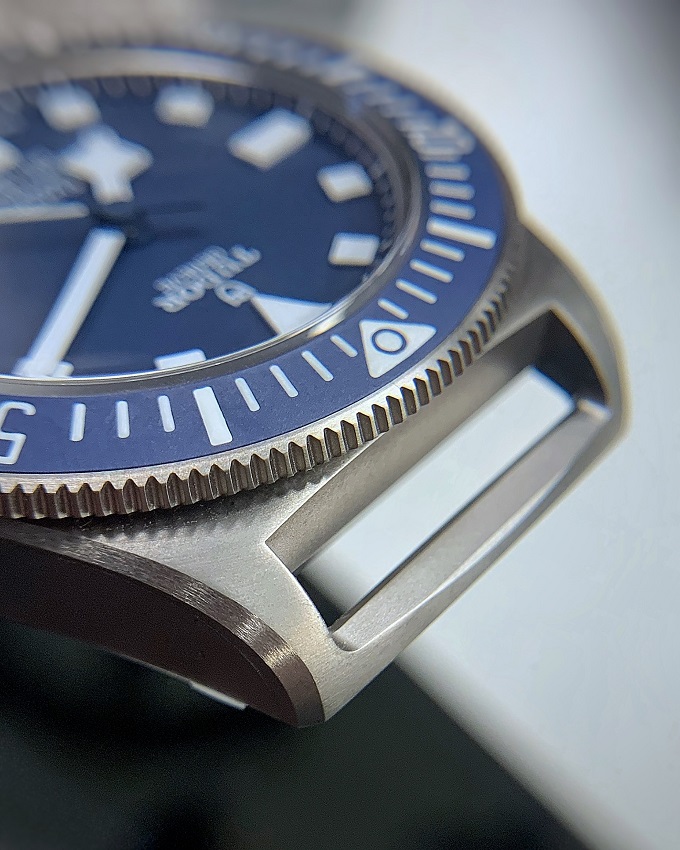
D-ring Lugs
As such, the lugs on the Pelagos FXD are fitted with a titanium D-ring which is part of the case, replacing the spring bar and allows the single pass strap to more securely fasten the watch to the divers’ wrists. The strap itself is fastened with a “self-gripping fastening system” (aka velcro) for added security, and the Pelagox FXD even comes with an additional complimentary strap!
One final touch that I enjoyed was the Marine Nationale insignia on the caseback, supplemented by M.N.22 (in this case denoting that the watch was made in 2022), where the first FXD watches were inscribed M.N.21.
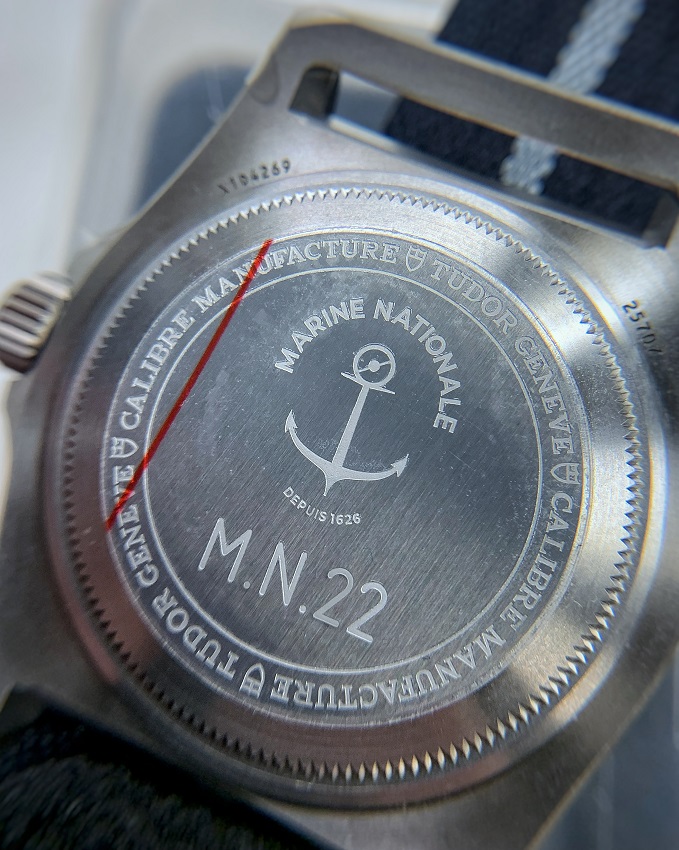
Marine Nationale insignia with M.N.22 engraving
My initial thoughts were that as much as I liked the idea and execution of this watch, on the wrist I thought it had the potential to feel a little… let’s say industrial, given what it is designed for and with whom it was designed.
All things considered, I appreciate that this watch will certainly not be to everyone’s liking, however personally I loved it. The fixed D-ring lugs are 52mm lug-to-lug, and the single pass strap sits on the wrist a little differently from what I am used to (you can kind of see this in the wrist shot photo further up the article) however I found the watch incredibly comfortable to wear on the wrist.
It wouldn’t be an everyday wear for sure, but it is something you could wear during any outdoor activities, water sports, and I think it is fair to say that the Pelagos FXD has taken its place at the top of my snorkelling watch shortlist. The reduction in spec has also been reflected with a matching reduction in price – where the original Pelagos is priced at £3650, the Pelagox FXD makes for an even better proposition at £3000.
In Summary
Firstly, a huge thank you to @_flatfour_ for the opportunity to enjoy this watch – be sure to drop him a follow on Instagram!
Given the starting baseline of the original Tudor Pelagos, the Pelagos FXD was always going to be a decent dive watch. However, what Tudor and the Marine Nationale have done is to make this tool watch even “toolier”, paring it back from being somewhat or even considerably over-spec’d to a refined version of the watch, capable of what is actually required to do the job and to do it well. No more, and no less.
To fully appreciate this watch, I think you really need to keep in mind both what it is, and, more importantly, why it is; ultimately the Pelagos FXD is a dive watch designed for use in the underwater environments for military combat divers – not for a visit to the beach, and certainly not for “desk-diving”. With that, I think this is a big win for Tudor, and a superb addition to the Pelagos family.
If you have any questions, please get in touch via our Contact page, or via our Instagram.
You might also be interested in:
- My Spotlight: Tudor Submariner 9411-0
- Spotlight: Dive Watches
- Spotlight: Blancpain Fifty Fathoms Bathyscaphe Desert Edition
- Watch Stationery and Gift Ideas
- Watch Books, Watch Boxes and more at the Watch Affinity Shop on Amazon (commissions earned)
As an Amazon Associate, I earn from qualifying purchases – thank you for your support

